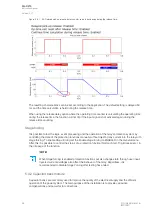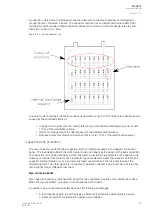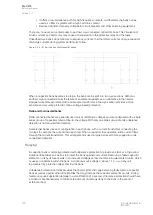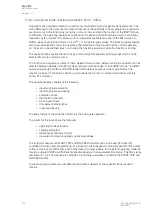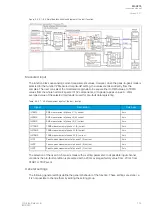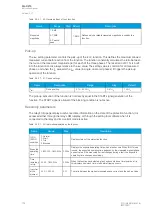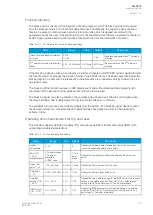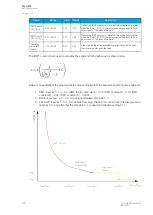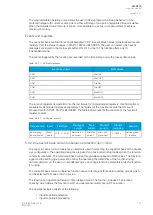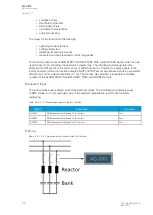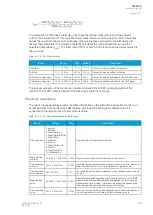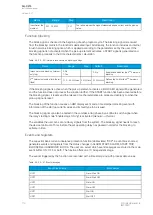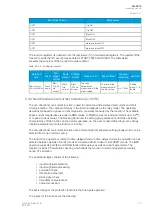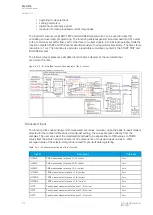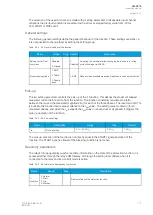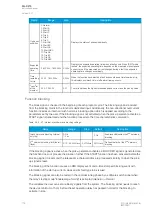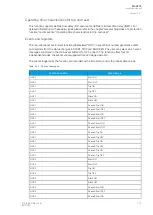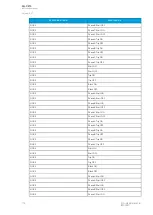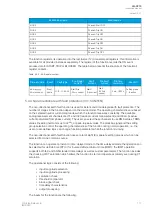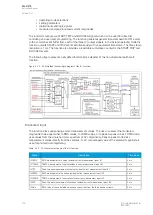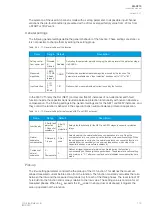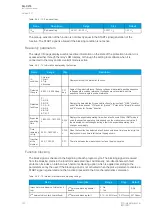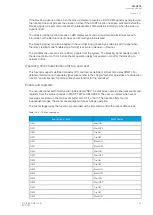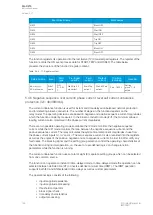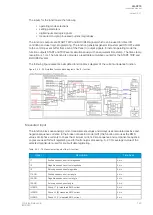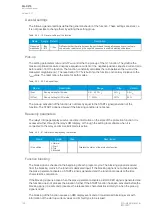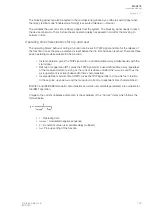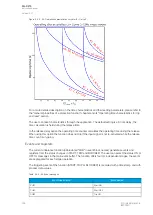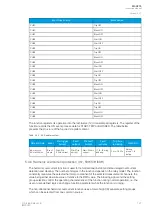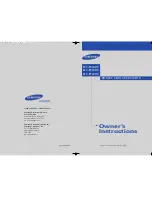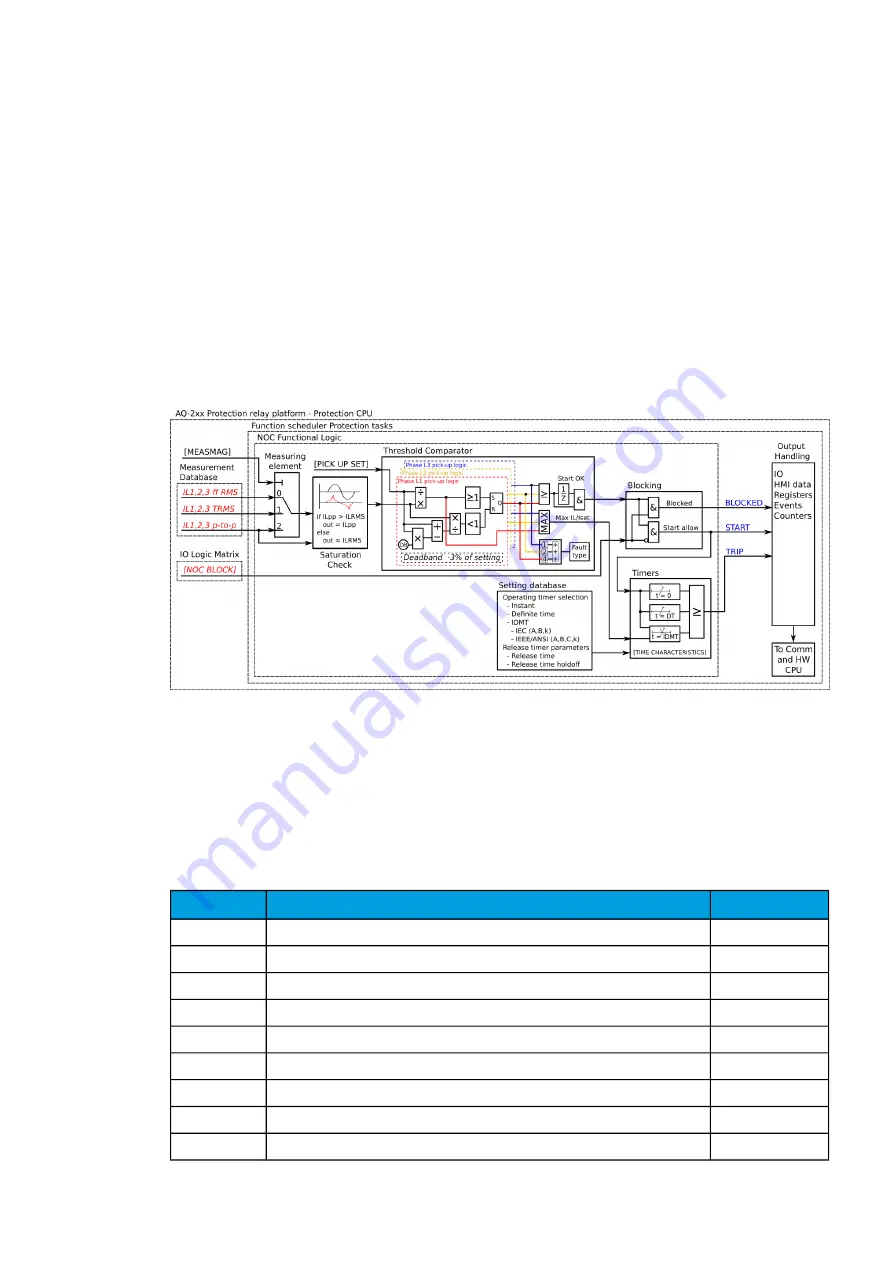
• operating mode selections
• setting parameters
• digital inputs and logic signals
• measured and pre-processed current magnitudes.
The function's outputs are START, TRIP and BLOCKED signals which can be used for direct I/O
controlling and user logic programming. The function generates general time-stamped ON/OFF events
to the common event buffer from each of the three (3) output signals. In the instant operating mode the
function outputs START and TRIP events simultaneously with an equivalent time stamp. The time stamp
resolution is 1 ms. The function also provides a resettable cumulative counter for the START, TRIP and
BLOCKED events.
The following figure presents a simplified function block diagram of the non-directional
overcurrent function.
Figure. 5.4.3 - 91. Simplified function block diagram of the I> function.
Measured input
The function block uses analog current measurement values. However, when the peak-to-peak mode is
selected for the function's "Measured magnitude" setting , the values are taken directly from the
samples. The user can select the monitored magnitude to be equal either to RMS values, to TRMS
values from the whole harmonic specter of 32 components, or to peak-to-peak values. A -20ms
averaged value of the selected magnitude is used for pre-fault data registering.
Table. 5.4.3 - 63. Measurement inputs of the I> function.
Signal
Description
Time base
IL1RMS
RMS measurement of phase L1 (A) current
5ms
IL2RMS
RMS measurement of phase L2 (B) current
5ms
IL3RMS
RMS measurement of phase L3 (C) current
5ms
IL1TRMS
TRMS measurement of phase L1 (A) current
5ms
IL2TRMS
TRMS measurement of phase L2 (B) current
5ms
IL3TRMS
TRMS measurement of phase L3 (C) current
5ms
IL1PP
Peak-to-peak measurement of phase L1 (A) current
5ms
IL2PP
Peak-to-peak measurement of phase L2 (B) current
5ms
IL3PP
Peak-to-peak measurement of phase L3 (C) current
5ms
A
AQ
Q-C215
-C215
Instruction manual
Version: 2.07
112
© Arcteq Relays Ltd
IM00040

